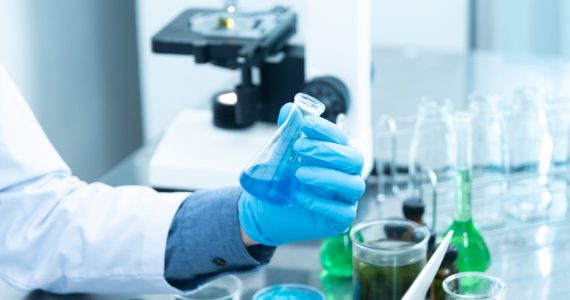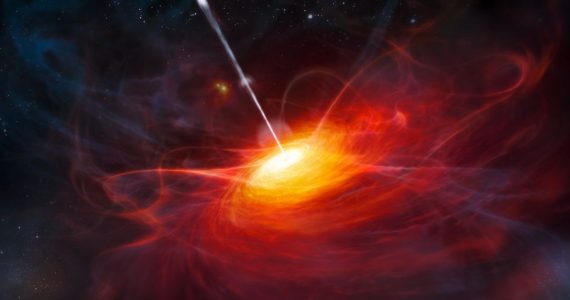Extinction is a natural part of evolution. But at times, it occurs when environmental changes happen at a much faster rate than animals and plants can adapt to it. Often it is balanced out by the evolution of the new species, thanks to mother nature. Although extinction is a natural process that constantly occurs, humans’ expanding footprints are making the situation worse.
Primarily because of shrinking habitats, the animals have been disappearing more quickly than the usual rate. From saber-toothed Smilodon to giant bird Moa, here are the top four most beautiful animals that went extinct many moons ago.
Smilodon (10,000 B.C.)
 Smilodon is a part of the prehistoric Saber-toothed cat family used to roam across the Western Hemisphere during the Ice Age or Pleistocene epoch. With its short and powerful limbs and enormous, deadly-sharp canines, the heavily muscled predator is famous for precision killing.
Smilodon is a part of the prehistoric Saber-toothed cat family used to roam across the Western Hemisphere during the Ice Age or Pleistocene epoch. With its short and powerful limbs and enormous, deadly-sharp canines, the heavily muscled predator is famous for precision killing.
It could open its jaws 120 degrees, a comparatively bigger gape than that of modern cats. Regarding the usage of the exceptionally long upper canine teeth, different opinions are there among the paleontologists, but its main use is to grab and hold onto its subdued prey. It went extinct around 10,000 years ago. According to the paleontologists, dependency on larger prey, climate change, stiff competition with the other species like humans can be the potential causes of the extinction.
Irish Elk (5,200 B.C.)
 This giant deer had a far-reaching range, encompassing from Ireland’s valleys to the far eastern region of Eurasia at the end of the last glacial period. Irish Elk is considered as one of the largest deers ever lived. It weighs around 700 kg and is 7 feet tall at the shoulder. It is a topic of much debate as to why the prehistoric animal used to grow so gigantic.
This giant deer had a far-reaching range, encompassing from Ireland’s valleys to the far eastern region of Eurasia at the end of the last glacial period. Irish Elk is considered as one of the largest deers ever lived. It weighs around 700 kg and is 7 feet tall at the shoulder. It is a topic of much debate as to why the prehistoric animal used to grow so gigantic.
A truly magnificent beast in size, the Irish Elk was the heaviest prehistoric deer. Peat bogs, lake sediments, and other wet places in Ireland have numerous preserved fossils of this animal. Most of the giant deers died out approximately 5,200 years ago. Many paleontologists argued that Irish Elk fell victim to its antlers that led to its extinction. Due to orthogenesis’s natural evolving process, the deers’ species had severe difficulty holding up the antlers’ excess weight. And we believe it must have been a struggle to avoid entanglement in the trees.
Woolly Mammoth (2,000 B.C.)
 The gigantic Ice Age herbivores lived on several northern parts of the continents and regarded as one of history’s most iconic extinct species. Since the mammoths roamed around during the last glacial period, they are specially built to survive the freezing climate.
The gigantic Ice Age herbivores lived on several northern parts of the continents and regarded as one of history’s most iconic extinct species. Since the mammoths roamed around during the last glacial period, they are specially built to survive the freezing climate.
The animal used to have a thick, furry coat of brown hair protected against the cold temperatures. With their exceptionally long tusks, which grew about 15 feet long, the animals could easily dig in the deep snow. A fully-grown male mammoth weighed up to 6 tonnes with a height of 11.2 ft. You can compare it’s enormous size to the extant species of African Elephants. The swampy coniferous tundra forest of high northern latitudes was home of the Woolly Mammoths. At the end of the last ice age, retreating ice accelerated the extinction of this herbivore.
Moa (1400)
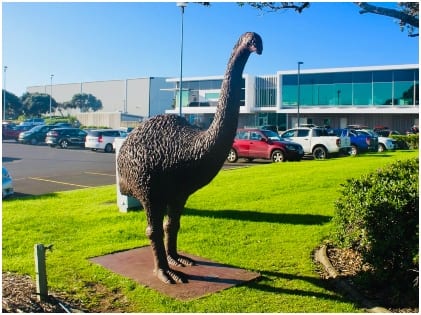 Moa was a now-extinct species of flightless birds mainly used to live in New Zealand. A mature bird could reach about 12 ft in height and about 230 kg in weight. It is still not proven what kind of sounds the birds used to make during mating or to show aggression, but with their long necks, they probably produce low-pitched resonant calling sounds.
Moa was a now-extinct species of flightless birds mainly used to live in New Zealand. A mature bird could reach about 12 ft in height and about 230 kg in weight. It is still not proven what kind of sounds the birds used to make during mating or to show aggression, but with their long necks, they probably produce low-pitched resonant calling sounds.
The Moa was a swift runner and could defend themselves with their long sturdy legs. Herbivore, in nature, the bird, used to eat seeds, fruits, leaves, and grasses. When humans began to spread worldwide, they reached New Zealand islands, and the giant birds were soon driven to extinction by overhunting. By 1445, all Moas died off. The first discovery of the fossils of Moa birds was a scientific marvel, and numerous museums across the world started acquiring specimens.
In this modern world, many species of animals are under threat now to become critically endangered. Not only the animals but the future of our next generation is in our hands. Either make a change to witness a beautiful world full of beautiful animals, or become extinct like the species we just spoke about. Time is running out.

